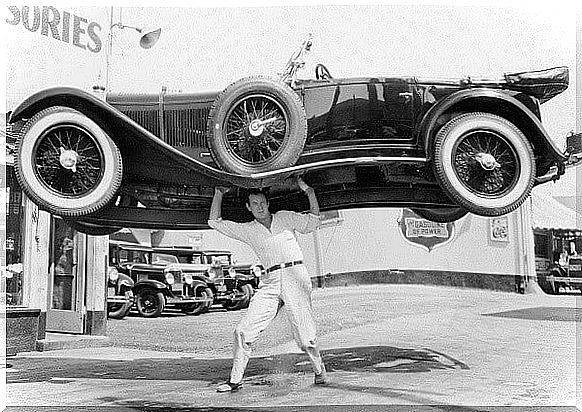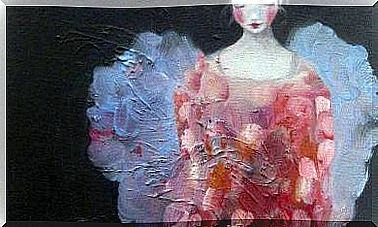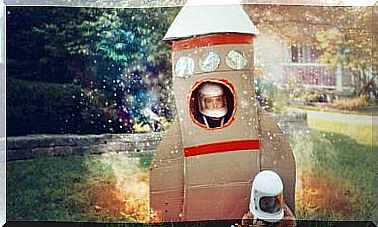Adrenaline, The Hormone Of Performance And Activation

Adrenaline allows us to achieve euphoria when we practice a sport, it is also it who makes us tremble when someone attracts us and what allows us to react to everyday dangers. Now, in addition to favoring our performance and activation, adrenaline also has a dark reverse, because an excess in its release also has serious side effects.
We are facing a polyvalent substance, as are, for example, dopamine or oxytocin. However, this hormone, which in turn fulfills the functions of a neurotransmitter, is one of the one that has the most impact on our behavior. For example, it is she that activates our most instinctive survival mechanisms, but it is adrenaline that also makes us drift towards addictive behaviors or that facilitates those states of anxiety or chronic stress that we often suffer.
As a curiosity, it is interesting to know that many professionals who are dedicated to crisis management usually train their clients in the proper management of adrenaline. To do this, they are invited to go through a series of dynamics and drills with high physical and emotional stress to regulate their response style. The purpose is simple: train them so that they do not lose control and so that adrenaline is their best ally, never their enemy.
To achieve it, to know everything that this hormone is capable of originating in our body and behavior is something amazing. We suggest you discover it below.

Adrenaline, what is it and what functions does it have
In 1982, Angela Cavallo of Lawrenceville, Georgia became Mother of the Year. This is how the press defined it after it was news around the world for something difficult to believe if it weren’t for the fact that there were several witnesses. His son Tony was in the garage at home repairing his old Chevrolet when suddenly, the jack that was holding the car failed and the worst happened: the car collapsed on top of the young man, leaving him trapped.
Angela Cavallo was 51 years old and weighed just over 65 kilos. She did not go to the gym, was not heavyset, or did weights at any point in her life. However, when he saw his son’s feet under the car, he began to scream for help from the neighbors. Since no one was coming, he didn’t hesitate for a second, he ran to that 1,500-kilo car and picked it up, as if nothing had happened. He kept it that way for a few seconds, long enough for the neighbors to arrive soon and remove his unconscious son.
This feat actually contains two almost magical elements: motherly love and adrenaline, a lot of adrenaline. Enough so that at any given moment we can do titanic things to guarantee our survival or that of others.
The hormone that activates us
Adrenaline belongs to the group of catecholamines (as well as norepinephrine and dopamine) and is produced in the adrenal glands, just above the kidneys. However, we also have its synthetic version, epinephrine, a substance created at the laboratory level, and being chemically identical to the biological one, it is very useful in many medical emergencies for cardiopulmonary resuscitation.
To now understand its mechanism of action, we can take as a reference what happened with Mrs. Angela Cavallo and her son:
- When we see a threatening or dangerous situation (a car falling on our child, for example), the hypothalamus, partly responsible for our emotional reactions, activates the sympathetic system to emit a specific type of response to that stimulus.
- The hypothalamus in turn has a direct connection with the adrenal medulla, and this, with the adrenal glands. Glands prepared to release a good amount of adrenaline very quickly to activate us, to mediate our behavior and type of response.
Adrenaline uses very specific mechanisms of action
On the other hand, along with the release of adrenaline, a series of very fine-tuned biological mechanisms are set in motion to facilitate our reactions:
- We lose “situational awareness”, that is, our brain wants us to focus all our attention on the same thing. What’s around it doesn’t matter anymore.
- On the other hand, the brain chooses which senses are going to be most useful. In fact, it is very common for it to facilitate hearing exclusion. In other words, we stop hearing with such precision to enhance another sense: vision.
- Thus, our pupils will dilate almost instantly so that more light enters and we can see more clearly.
- Adrenaline also has a well-known characteristic: the dilation of the blood vessels and the increase of the heart rate. It does it for a very specific purpose: to pump more blood so that more oxygen reaches our muscles and thus have much more strength and greater reaction capacity.
In turn, and this is also interesting, the brain will order the immune system to release a high level of pain-relieving dopamine and endorphins. All of this will prevent us from feeling pain if we are injured, and this meant that, for example, Mrs. Angela Cavallo did not notice any discomfort when lifting a 1,500-kilogram car.

The positive and negative side of adrenaline
Adrenaline has many benefits. It can stimulate us to achieve amazing challenges, and it can also be as enjoyable as it is addictive. Above all, it makes it easier for us to adapt to any stressful situation, it activates us when we do risky sports, it makes it easier for us to give our best in exams or to enjoy a love affair.
That trembling in the hands, that knot in the stomach, that dilated pupil when we look at the person who attracts us are direct effects of adrenaline. It is she who makes us feel euphoric when dancing, being in the company of other people having fun, it is she who offers us an incredibly pleasant download when we enjoy riding the roller coaster at an amusement park or feeling speed driving a car.
As we can see, many of these behaviors also have a “risk” component. It is precisely when we put our foot on the ground, after having come out of that experience unscathed, when we experience that peak of euphoria that is soon accompanied by an immense and satisfactory relaxation. All this means that there are people addicted to adrenaline, a somewhat darker reverse of which it is necessary to know more data.

Adrenaline addiction
There are people who drift into the more dangerous side of extreme sports. There are those who carry out extreme behaviors and actions where they put their lives at risk. Behind this type of behavior that many of us will have seen on occasion, there is sometimes something more than the simple search for pleasure and adventure. .
When we think of an addict, we almost immediately visualize a person who uses certain drugs and does so out of dependence (not so much to seek pleasure, but rather to eliminate discomfort). However, what is not always talked about is that adrenaline and that constant search to experience risks in order to feel alive is in turn a very specific type of addiction.
On the other hand, and as with other addictive substances, it is common that little by little higher “doses” are needed to experience the same effects as before. The organism gradually develops tolerance and therefore, riskier experiences, more extreme behaviors must be sought to achieve the same sensation.
Likewise, it is necessary to differentiate the athlete who carries out a risky practice with responsibility and professionalism, from that other person who, doing the same, is unable to think or reflect on the consequences of their own actions.
In this sense, let’s think that the addict does not do it, the addict seeks only to satisfy a biological need.
Adrenaline and chronic stress
We have already seen that adrenaline can become a very specific type of addiction. Now, it is interesting to remember also another of the most negative aspects of adrenaline, the one where it facilitates little by little and day by day the formation of chronic stress.
This term, “chronic stress”, is the direct result of our ongoing pressures and stresses, those that we do not stop in time or that we do not manage adequately. This state is the direct result of the accumulation of two very specific hormones: adrenaline and cortisol in the blood.

When we go through situations that cause us discomfort, that make us uncomfortable, that threaten our physical and emotional balance, our brain interprets them as a danger, as a focus to react to. It is then that adrenaline makes an appearance, and it is also then that we, sensing this series of threats, should be able to act efficiently.
However, we do not always do it, and hence adrenaline accumulates and generates changes in our body (hypertension, tachycardia, poor digestion …). We lose our health and put our lives at risk. It is therefore not just anything, it is not something to neglect, it is not something to postpone until tomorrow or next week …
To conclude, we could say that adrenaline fulfills its “magical” function as long as it is released in a specific and punctual way. It is then that it acts as a vital impulse to help us react, to put us safe, to make us better adapt to certain situations. However, if we seek its effect on a daily basis or allow tension and fears to swirl constantly within us, it will act in the worst possible way: taking away our health.
Bibliographic references
R. Kandel (2001). Principles of neuroscience Madrid, LTC.
Hart, A (1995). Adrenalin and Stress. Thomas Nelson editors.
Bennett M (1999). “One hundred years of adrenaline: the discovery of autoreceptors.” Thieme Publishing Group.









